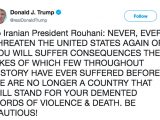
No, Amazon Cannot Replace Libraries
July 24, 2018On Saturday, Forbes published an article titled “Amazon Should Replace Local Libraries to Save Taxpayers Money,” that elicited extremely strong backlash on Twitter from librarians and library patrons alike. The article has since been taken down, though the (extremely ratioed) tweet from the author about it remains.
In the article, writer Panos Mourdoukoutas argued that libraries are no longer important to the community as the result of alternative "third places" like Starbucks, and "no shortage of places to hold community events," as well as streaming services like Netflix and Amazon Prime and the rise of e-books that have "turned physical books into collector’s items, effectively eliminating the need for library borrowing services."
Hundreds of Twitter users took to the platform to share both their anger with the piece and their love for libraries. People seemed to especially take issue with the author picking Amazon—notorious for its horrible treatment of employees, and accusations of ruining the cities it opens warehouses in—as a potential replacement.
Obviously, as the outrage from these users demonstrates, libraries are beloved and important in communities. Mourdoukoutas's argument that libraries are becoming less useful is patently false, in a way that's fairly obvious. But the notion that libraries aren't worth their value to taxpayers—one that fails to take into account the financial returns of a library and expenses of buying these items on one's own—fails to address the vast importance a library has on its community as a physical space open to anyone in the public.
Most of the utilities of libraries are quite obvious, like how they're essential to lowering the barrier of entry on activities that may be cost prohibitive. But many of us aren't aware of the impact our libraries have on our own communities, nor the programs they offer. Pew Research Center noted in 2014 that 36 percent of Millennials (which Pew categorized as age 18-30 for the purposes of this survey) and 29 percent of those 30 and older know "little or nothing" about their local library's services.
"Public libraries are and always have been more about the people they serve than the books they house—they are the cornerstone of the community," Los Angeles City Librarian, John F. Szabo, told me by email. "People still come to their beloved neighborhood library for story time or to look for a job, and by leveraging libraries as trusted community resource centers, we are also able to engage with residents by offering summer lunches, flu shots, immigrant services and workshops for starting a small business. Whether people are just starting out or completely starting over, more than any other place in the city, people start at the Los Angeles Public Library."
Some of these programs are as fundamental as child entertainment and literacy, on-trend as terrarium building, or family friendly as movie screenings. Many are highly specific and supplement programs that aren't offered at school or are financially unavailable. Pham Condello, Managing Librarian of Youth Services at Old Bridge Library, leads a sensory play program for children ages two-18 who are on the Autism spectrum, where they can improve social play, develop fine motor skills, and explore sensory stations.
"Last week, I had a family attend our Sensory Play who was having an issue with their insurance carrier and was super stressed out, because her insurance company refuses to pay for the much needed therapy sessions for her low-functioning autistic three-year-old," Condello told me in an email. "Everyone not only gave the mom sympathy but shared their own insurance horror stories. The mom left feeling a little bit lighter and with a few ideas of where else she could turn to."
"Program attendance is up 42 percent between 2015 and 2017," Angela Montefinise, senior director of public relations for the New York Public Library (NYPL), told me by email. And "early literacy program attendance is up 105 percent." The NYPL, she added, even offers story time to children at homeless relief shelters.
This is just the tip of iceberg of amenities that libraries provide to the homeless, especially in larger cities like New York or Los Angeles. The Los Angeles Public Library (LAPL) partners with the Department of Mental Health, LA Homeless Service Authority, People Assisting the Homeless (PATH) and the Department of Public Social Services.
"An average of 300 homeless individuals visit the Central Library [the largest LAPL branch] each day seeking free services and amenities, including Internet and computers, Wi-Fi, reading materials and shelter from the weather," The Urban Libraries Council, the leading membership organization for North American and Canadian librarians, reports. LAPL connects "the homeless to housing, health services, hygiene kits, bus tokens, free cell phones, social service benefits such as Medi-Cal and CalFresh, and even physical transportation to shelters." These types of partnerships are especially important to Los Angeles where, as the LA Times reports, local authorities estimate that 30 percent of the county’s homeless have serious mental illness.
This effort echoes a sentiment I found etched across numerous other library systems—one of radical inclusion and desire to serve as many members of the community as possible. "Why is it important for libraries to engage the homeless?" Jo Giudice, Director of the Dallas Public Library said in a short video about their Homeless Engagement Initiative. "The library is free and open access to all customers. This becomes an opportunity for them to find a job, to be connected with resources. And that's what the library is about, the library is a place where people come for information, so that was ultimately the dream."
The availability of physical spaces to any and all patrons is especially important given the rise in “hostile architecture,” a type of urban design that limits loitering, and more generally, the presence of “undesirable” people in public spaces. Some of these practices are as simple as ground spikes or as complex as benches that appear visually beautiful but are crafted so that lying down comfortably is impossible.
The library is also an incredible equalizing force in internet access and digital literacy. "From 2015 to 2017, The New York Public Library nearly doubled Wi-Fi sessions, and had a steady three million computer sessions in its 92 buildings annually," according to Montefinise. And the LAPL says they have logged more than 109,000 hours of computer access from 2016-2017 at the Central Library alone. Libraries are doing an admirable job in promoting digital literacy, through training programs on the internet—nearly every library program I perused had some version of internet literacy on their program schedule—and through their own pivots to digital with apps like Overdrive, Kanopy, and Lynda.
Libraries also participate in local advocacy and promotion of local culture through something as simple as a themed landing page, like San Francisco's LGBTQIA Pride resources, or offering programs like the NYPL's Culture Pass program, that allows cardholders to visit a number of NY museums for free. "In the first week, we had over 12,000 library card applications at NYPL," according to Montefinise.
They do all of this despite budgetary constraints and threats to cut down budget. "New York City public libraries make up make up less than one percent of the city budget," Montefinise wrote. And Trump's "skinny budget" proposes to cut $208 million from The Institute of Museum and Library Services, which would leave funding at a measly $23 million for 2019. While this doesn't mean libraries are to subsist on these funds alone—state and federal dollars are a library's smallest source of funding—it does mean that libraries must work harder to secure the local sources of funding that they traditionally need to make ends meet. This includes city budget, grants for specific purchases, donations, and other fundraising efforts.
Libraries are important now more than ever, and supporting a library is as easy as using it and familiarizing yourself with the resources that your library offers. And for those who are interested in engaging further, most libraries have a "Friends and Family" institution to which you can donate, along with some kind of shop where you can purchase donated and decommissioned books. You can frequently also donate your own books or your time—community program usually benefit from some extra help. And if you need to offer any library haters a smackdown, the American Library Association even has a handy PDF with a list of impressive, “quotable” statistics.
"Public libraries are a unique and irreplaceable amenity at the foundation of our democracy of informed citizens," Christopher Platt, Chief Branch Library Officer, New York Public Library, told me by email. "That is not changing. If anything, the public needs its public libraries more than ever, as we work to close the digital divide, help the less fortunate, and separate fact from fiction. We're not going anywhere."
Sign up for our newsletter to get the best of VICE delivered to your inbox daily.
Follow Nicole Clark on Twitter.
Correction: A previous version of this article stated that Pham Condello still worked at the Head of Youth Services at Hawaii State Library.


